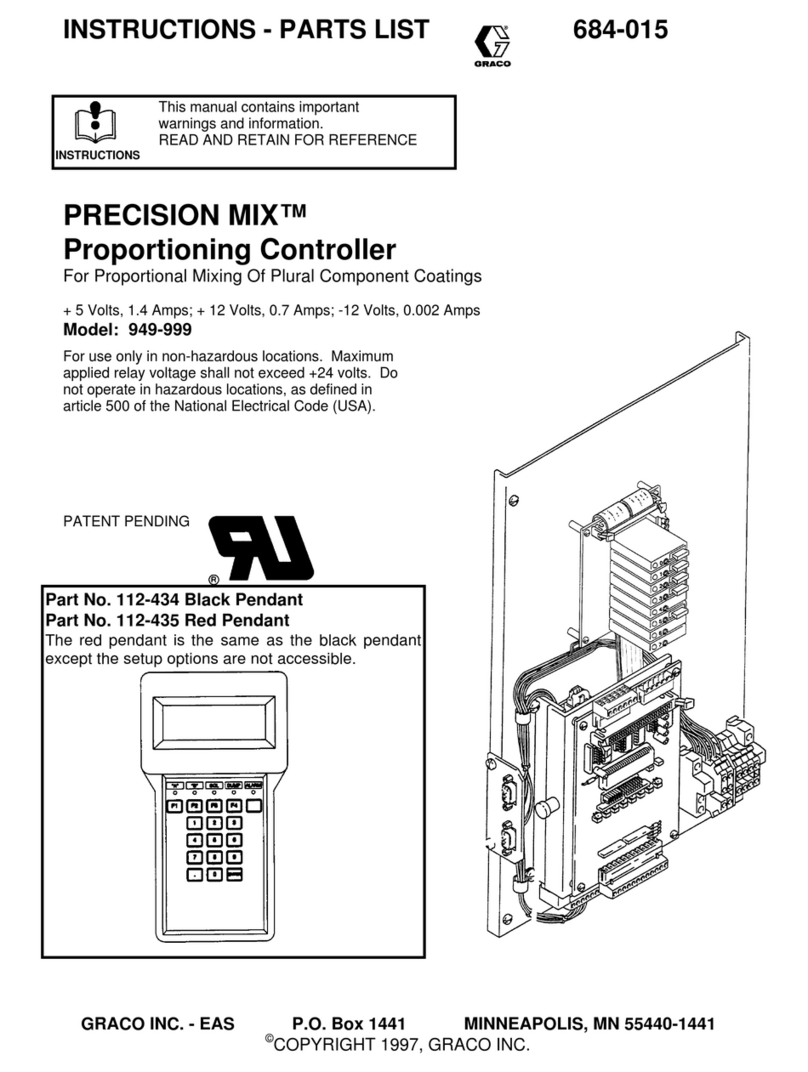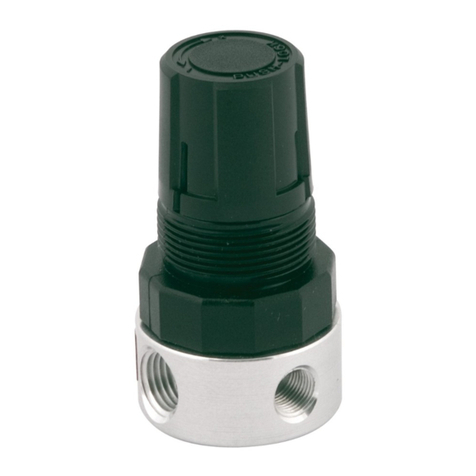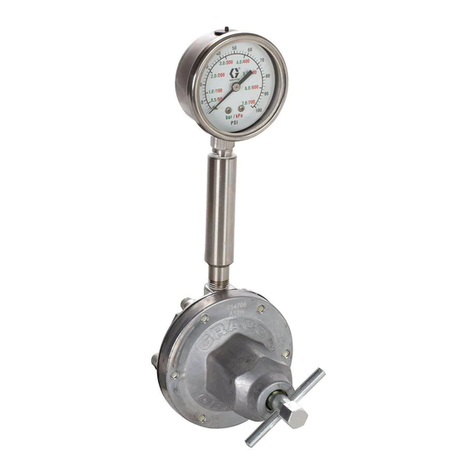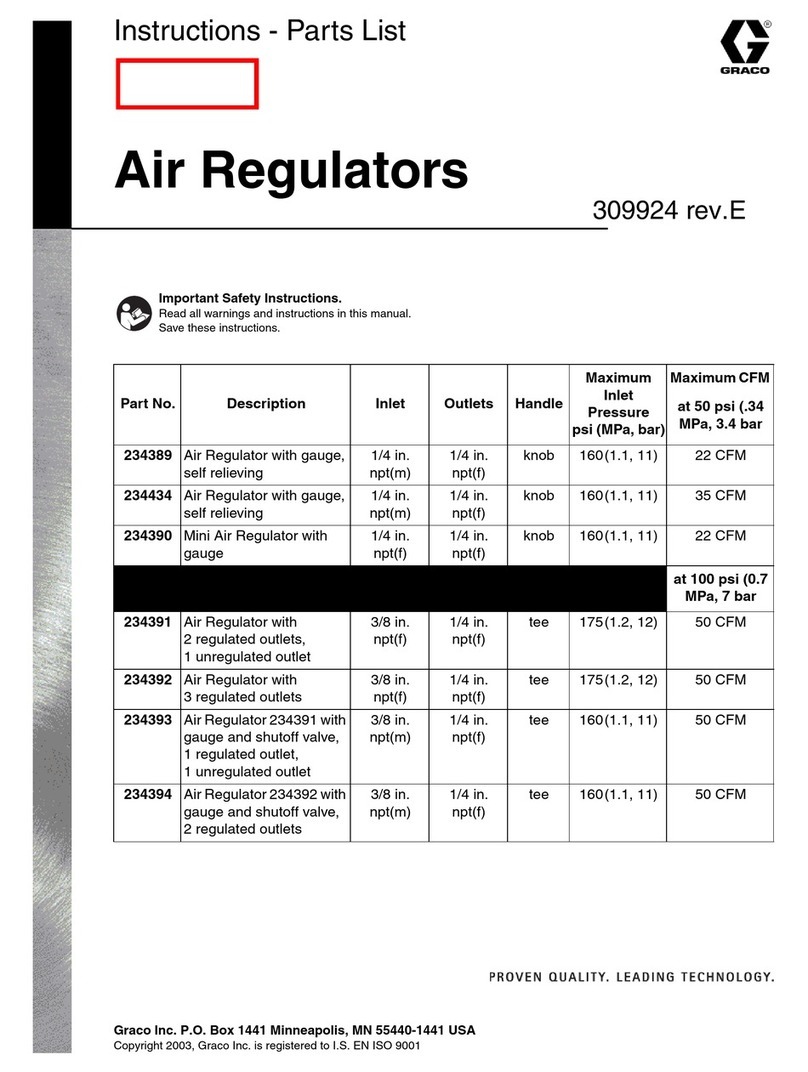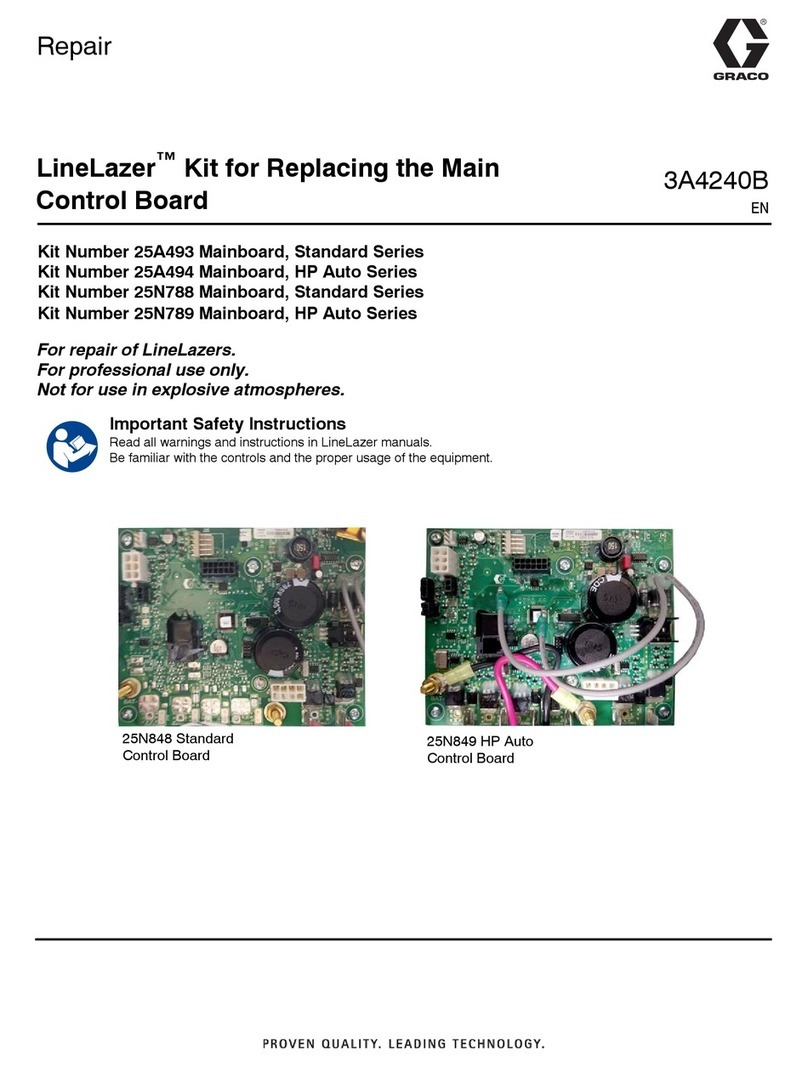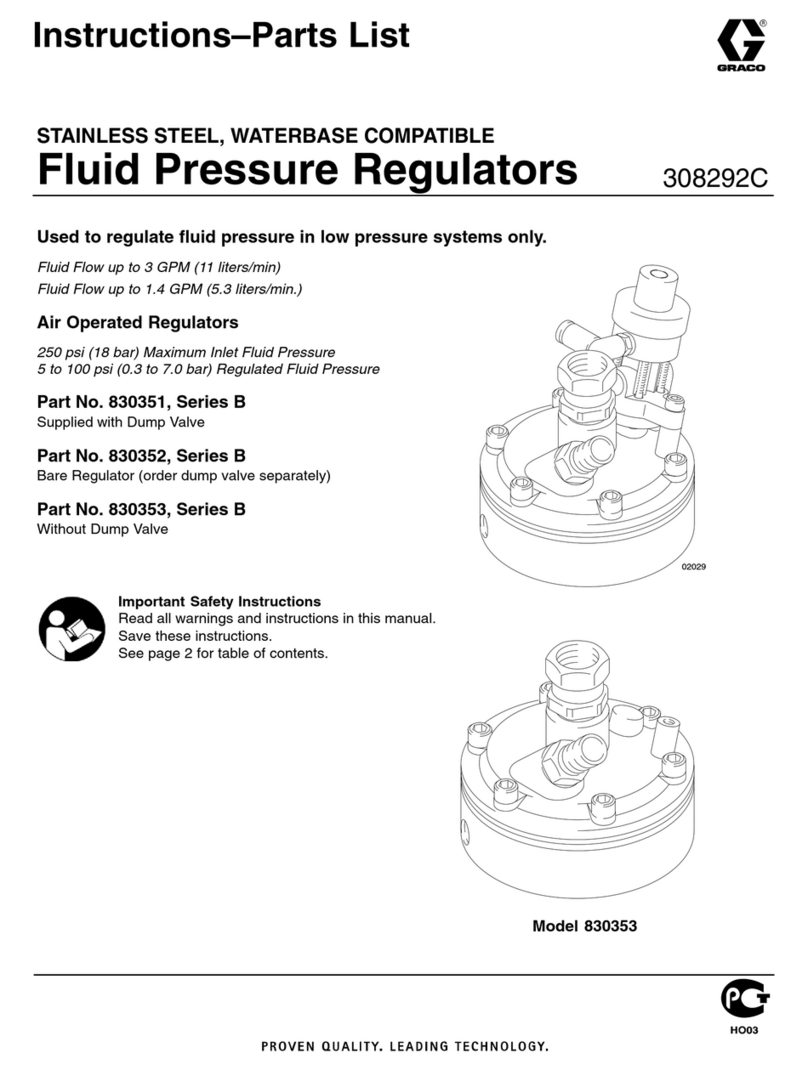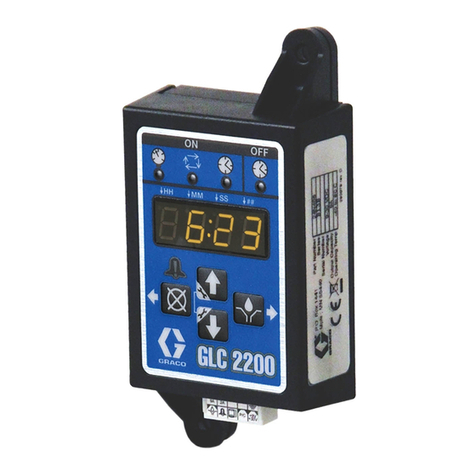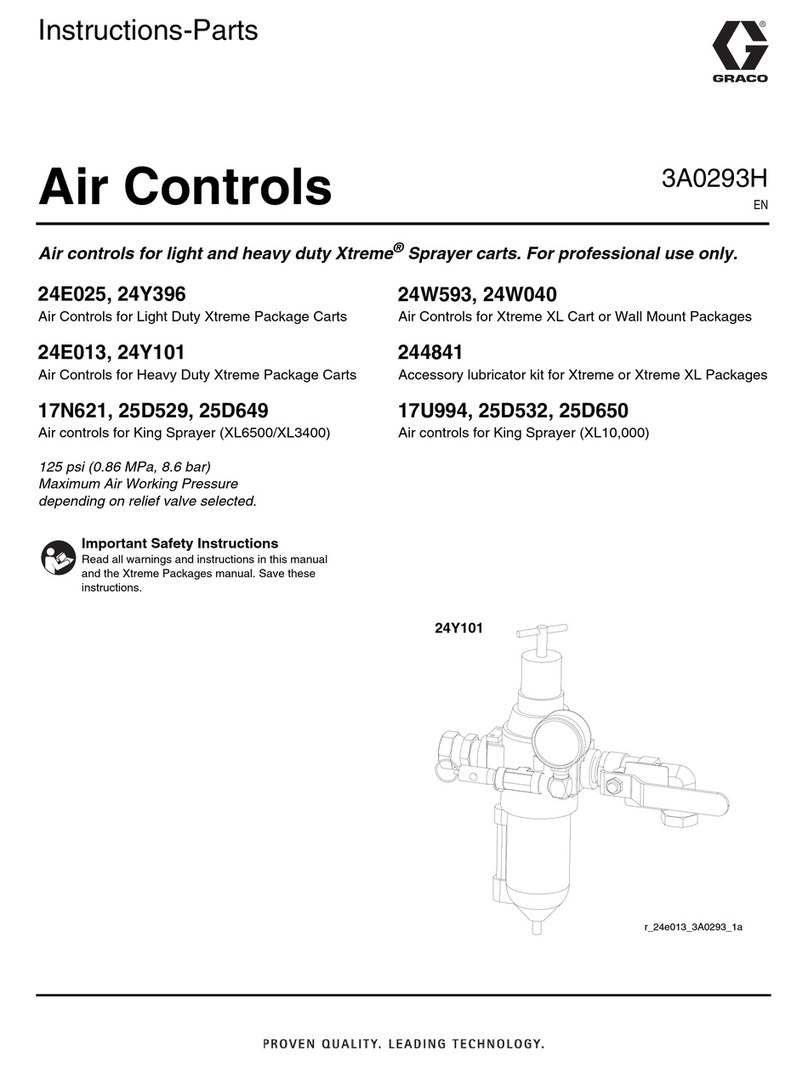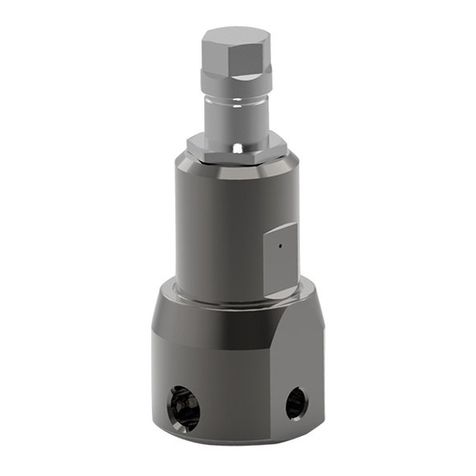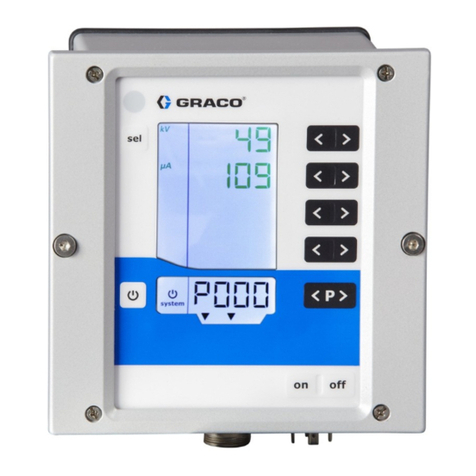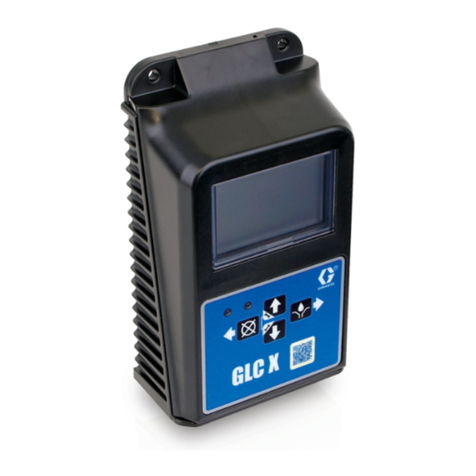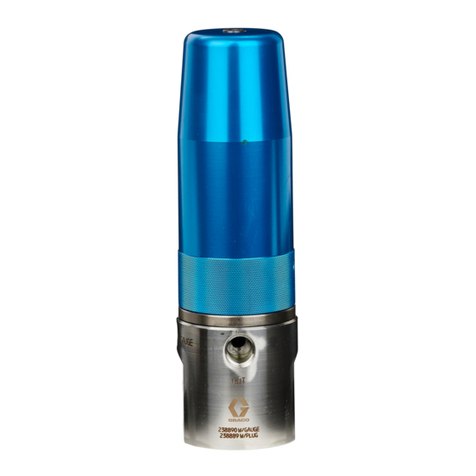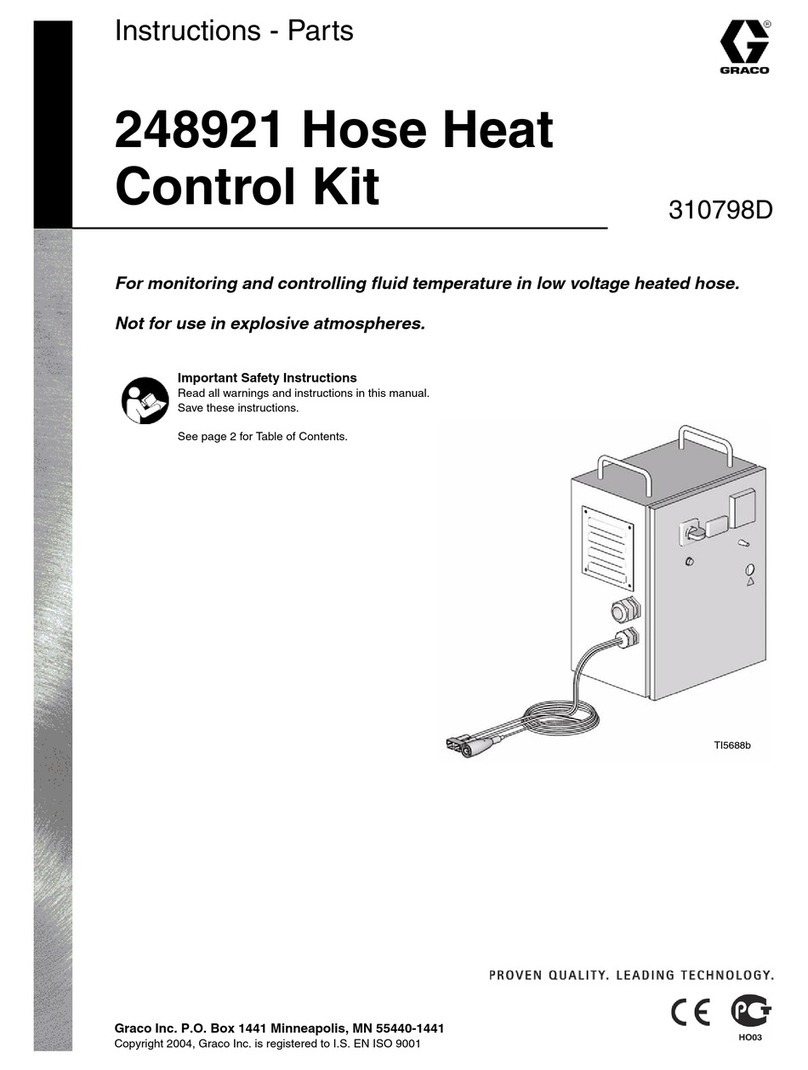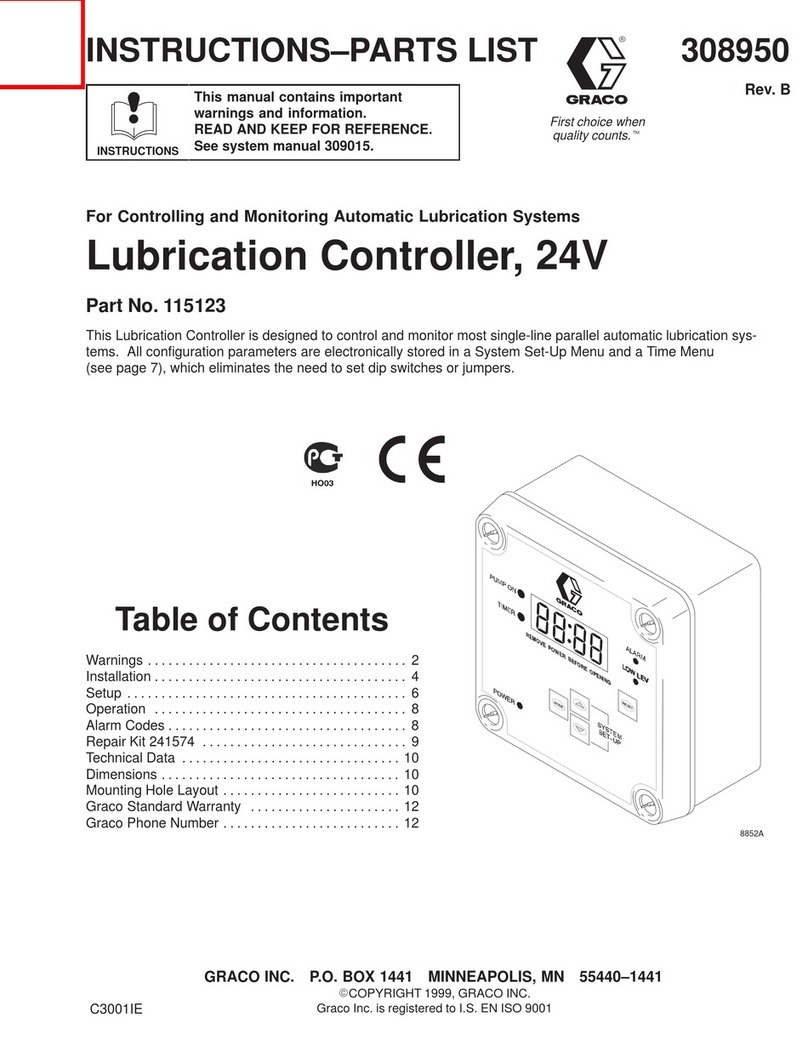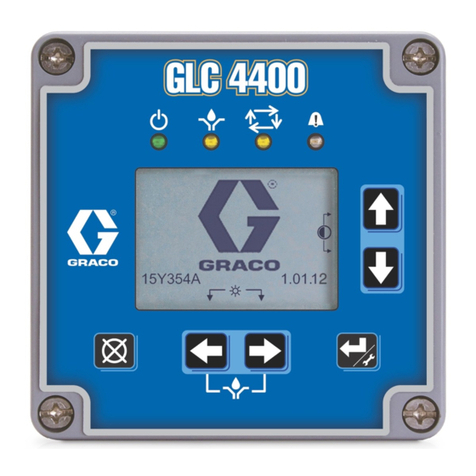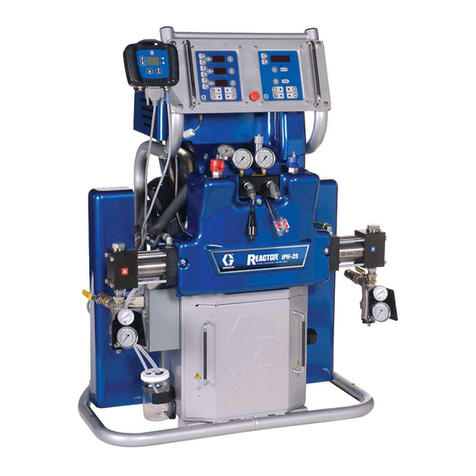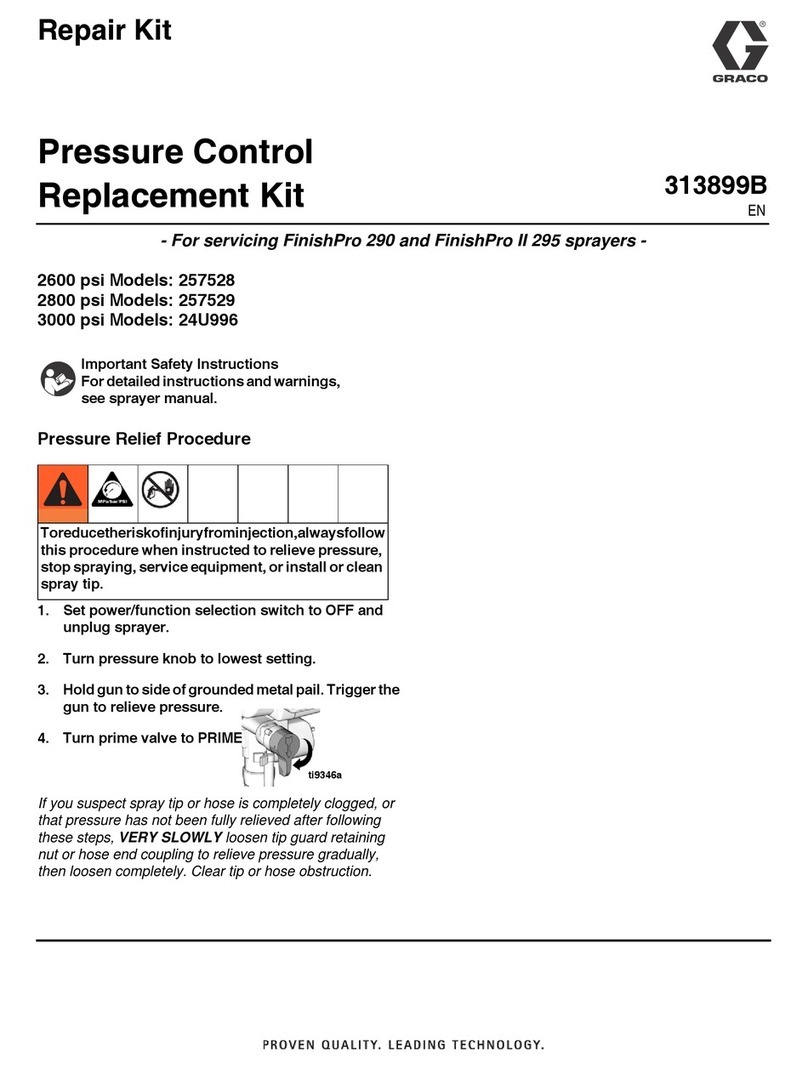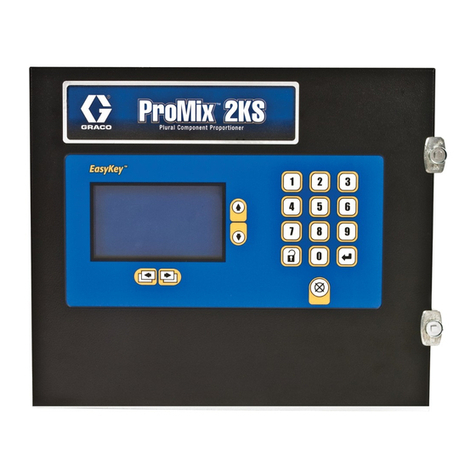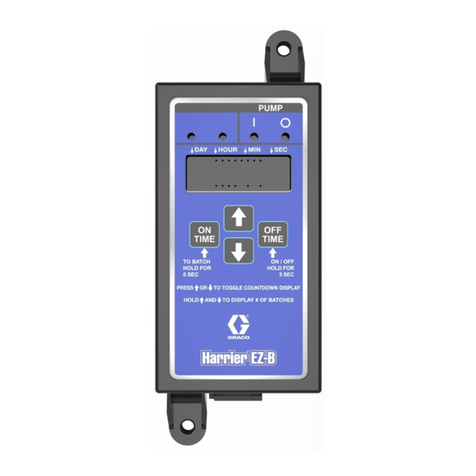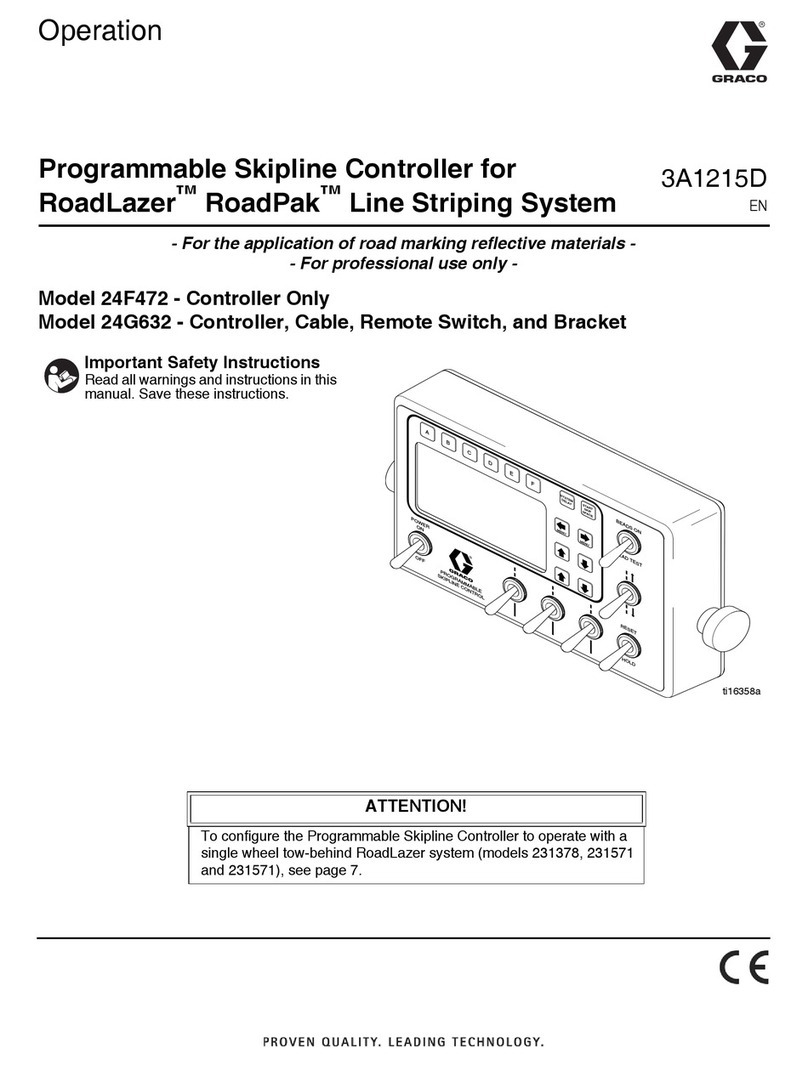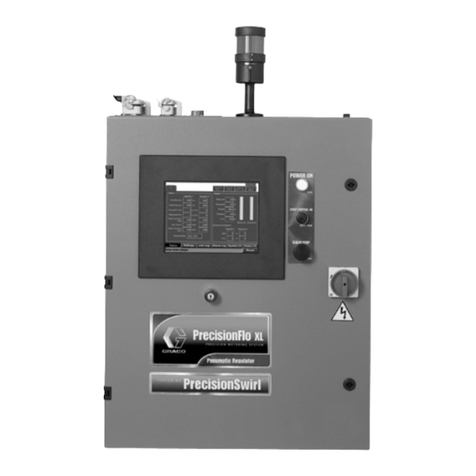
SAFETY
W
ARNINGS
SERIOUS BODILY INJURY, EXPLOSION, FIRE, OR ELECTRIC SHOCK
CAN OCCUR IF THE PRECAUTIONS BELOW ARE NOT FOLLOWED.
ELECTRICAL EQUIPMENT SHALL ONLY BE INSTALLED, OPERATED, AND SERVICED BY
TRAINED, QUALIFIED PERSONNEL WHO SHALL BE FULLY CONVERSANT WITH THE
REQUIREMENTS STATED WITHIN THIS INSTRUCTION MANUAL.
READ AND UNDERSTAND ALL INSTRUCTION MANUALS AND
WARNING LABELS BEFORE OPERATING THE EQUIPMENT.
FIRE, EXPLOSION, OR ELECTRIC SHOCK HAZARD
General
Safety
To
reduce the risk of fire, explosion, or electric shock:
1. DO
NOT operate in hazardous locations, as defined in Article 500 of
the
National Electrical Code (USA).
2.
Operate the PrecisionMix in well–ventilated areas only
.
3.
The equipment MUST be grounded (see below).
4.
Keep liquids away from the electrical components.
5. Disconnect
electrical power at the main switch before servicing
the
unit.
6. DO
NOT disassemble the electrical
control. Call a qualified electri
-
cian.
Grounding
All
parts of the fluid
system must be properly grounded to reduce the risk
of
static electricity discharge. Static electricity is created by the high ve
-
locity
flow of fluid through the system. When the static electricity is
dis
-
charged,
sparking occurs. Sparks can ignite fumes from solvents and the
fluid being sprayed, dust particles and other flammable substances,
whether
you are spraying indoors or outdoors, and can cause a fire or ex
-
plosion
and serious bodily injury and property damage.
In
a low
pressure air spray system, static sparking is generally not a prob
-
lem.
However
, some simple precautions should be taken to reduce the
risk.
CHECK your
local electrical code for detailed grounding instructions
for
your area and
type of equipment, and BE SURE to ground all of this
spray
equipment:
1.
PrecisionMix:
the PrecisionMix electronics must be grounded
through an approved grounded power cord, connected to a
grounded
electrical socket. T
o ground the PrecisionMix frame, use
a ground wire and clamp connected to a true earth ground. See
page
33 for an available ground wire and clamp.
2.
Feed
pumps or
pressure pots:
use a ground wire and clamp. See
your
separate pump or pressure pot manual.
3.
Air compressor:
follow manufacturer
’
s recommendations.
4.
Object being sprayed:
according to your local code.
5.
All
solvent pails used when flushing,
according to your local
code.
Use only metal pails, which are conductive, placed on a grounded
surface.
Do not place the pail on a nonconductive
surface, such as
paper
or cardboard, which interrupts the grounding continuity
.
6.
T
o maintain grounding continuity when flushing
or relieving pres
-
sure
,
always hold a metal part of the spray gun firmly to the side of a
grounded
metal
pail, then trigger the gun.
Flushing
Safety
Before
flushing,
be sure the
entire system and flushing pails are properly
grounded. Refer to Grounding, at left. Follow the Pressure Relief
Procedure below
. Always use the lowest possible fluid pressure, and
maintain
firm metal–to–metal contact between the gun and the pail during
flushing
to reduce the risk of
injury from fluid splashing or static sparking.
Pressure
Relief Procedure
To
reduce the risk of serious bodily injury
, including splashing fluid
in
the eyes or on the skin, always follow this procedure whenever
you
shut of
f the PrecisionMix, when checking or servicing any part
of the system, when
installing, cleaning, or changing fluid tips, and
whenever
you stop spraying.
1. Press
the ST
OP switch on the PrecisionMix control panel at
the
beginning of the catalyst (component B) dispense.
2. Relieve
fluid and air pressure at the component and solvent
feed pumps or pressure pots, as explained in their separate
instruction
manuals.
3.
Press the ST
AR
T switch on the PrecisionMix control panel.
4. Hold a metal part of the spray gun firmly to the side of a
grounded
metal pail, and trigger the gun to relieve fluid pres
-
sure.
5. Set
the ON/OFF switch on the control panel to OFF
,
resetting
the
machine control counters.
6.
Set the ON/OFF switch to ON. Press the ST
AR
T switch.
7. Hold a metal part of the spray gun firmly to the side of a
grounded
metal pail, and trigger the gun to relieve fluid pres
-
sure
in the component A fluid section.
If
you suspect that the fluid tip or hose is completely clogged, or
that
pressure has not been fully relieved after following the steps
above,
VER
Y SLOWL
Y loosen the hose end
coupling and relieve
pressure
gradually
, then loosen completely
. Now clear the tip
or
hose.
EQUIPMENT MISUSE HAZARD
General
Safety
Any misuse of the spray equipment or accessories, such as
overpressurizing,
modifying parts, using incompatible chemicals and flu
-
ids, or using worn or damaged parts, can cause them to rupture and result
in
serious bodily injury
, such as splashing fluid in the eyes or on the skin,
or
fire, explosion or property damage.
NEVER
alter or modify any part of this equipment; doing so
could cause it
to
malfunction.
CHECK
all spray equipment regularly and repair or replace worn or dam
-
aged
parts immediately
.
Always
wear protective eyewear
, gloves, clothing and
respirator as rec
-
ommended
by the fluid and solvent manufacturer
.
System
Pressure
NEVER exceed 100 psi (7 bar) air pressure to the PrecisionMix, and
NEVER
exceed 120 psi (8.4 bar) maximum fluid working pressure.
Be
sure that all spray equipment and
accessories are rated to withstand
the
maximum air and fluid working pressures of the system. DO NOT ex
-
ceed the maximum working pressure of any component or accessory
used
in the system.
Fluid
Compatibility
BE
SURE that all fluids and solvents used are chemically compatible with
the
wetted parts of each of your system’
s components. Always read
the
manufacturer’s
literature before using fluid or solvent in your system.
IMPORTANT
United
States Government safety standards have been adopted under the Occupational Safety and Health Act. These standards – particularly the Gen
-
eral
Standards, Part 1910, and the Construction Standards, Part 1926 – should be consulted.
